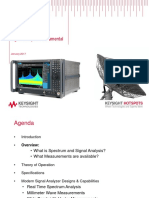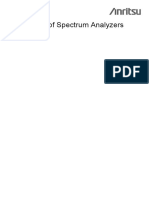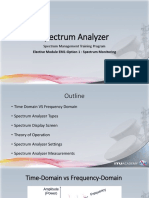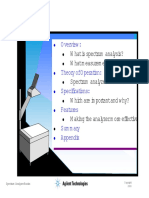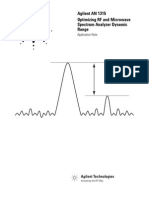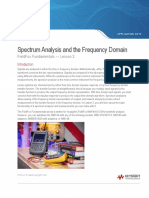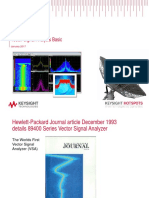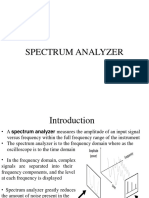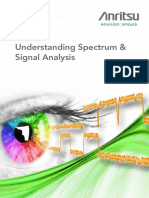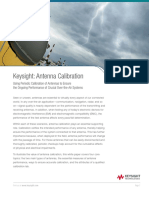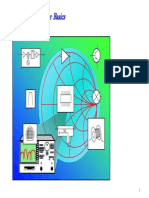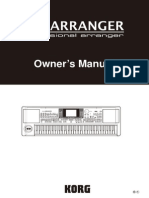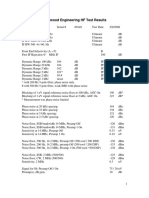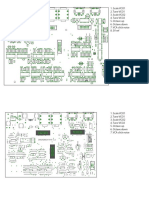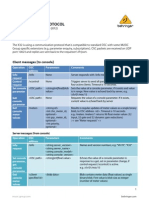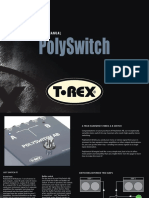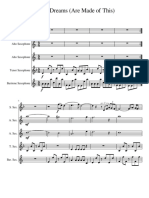0% found this document useful (0 votes)
166 views48 pagesSpectrum Analysis
The document discusses spectrum analysis using spectrum and signal analyzers. It provides an overview of traditional swept spectrum analyzers and modern signal analyzers. Swept analyzers use a filter that sweeps over a frequency range of interest to separate signals, while modern analyzers use FFT to simultaneously measure multiple frequencies. The document discusses the basic blocks of swept analyzers including the RF front end, mixer, IF filter, detector, and other components and how they operate. It also covers detection types, resolution bandwidth, and other measurement concepts.
Uploaded by
Paul Danniel AquinoCopyright
© © All Rights Reserved
We take content rights seriously. If you suspect this is your content, claim it here.
Available Formats
Download as PDF, TXT or read online on Scribd
0% found this document useful (0 votes)
166 views48 pagesSpectrum Analysis
The document discusses spectrum analysis using spectrum and signal analyzers. It provides an overview of traditional swept spectrum analyzers and modern signal analyzers. Swept analyzers use a filter that sweeps over a frequency range of interest to separate signals, while modern analyzers use FFT to simultaneously measure multiple frequencies. The document discusses the basic blocks of swept analyzers including the RF front end, mixer, IF filter, detector, and other components and how they operate. It also covers detection types, resolution bandwidth, and other measurement concepts.
Uploaded by
Paul Danniel AquinoCopyright
© © All Rights Reserved
We take content rights seriously. If you suspect this is your content, claim it here.
Available Formats
Download as PDF, TXT or read online on Scribd
/ 48


